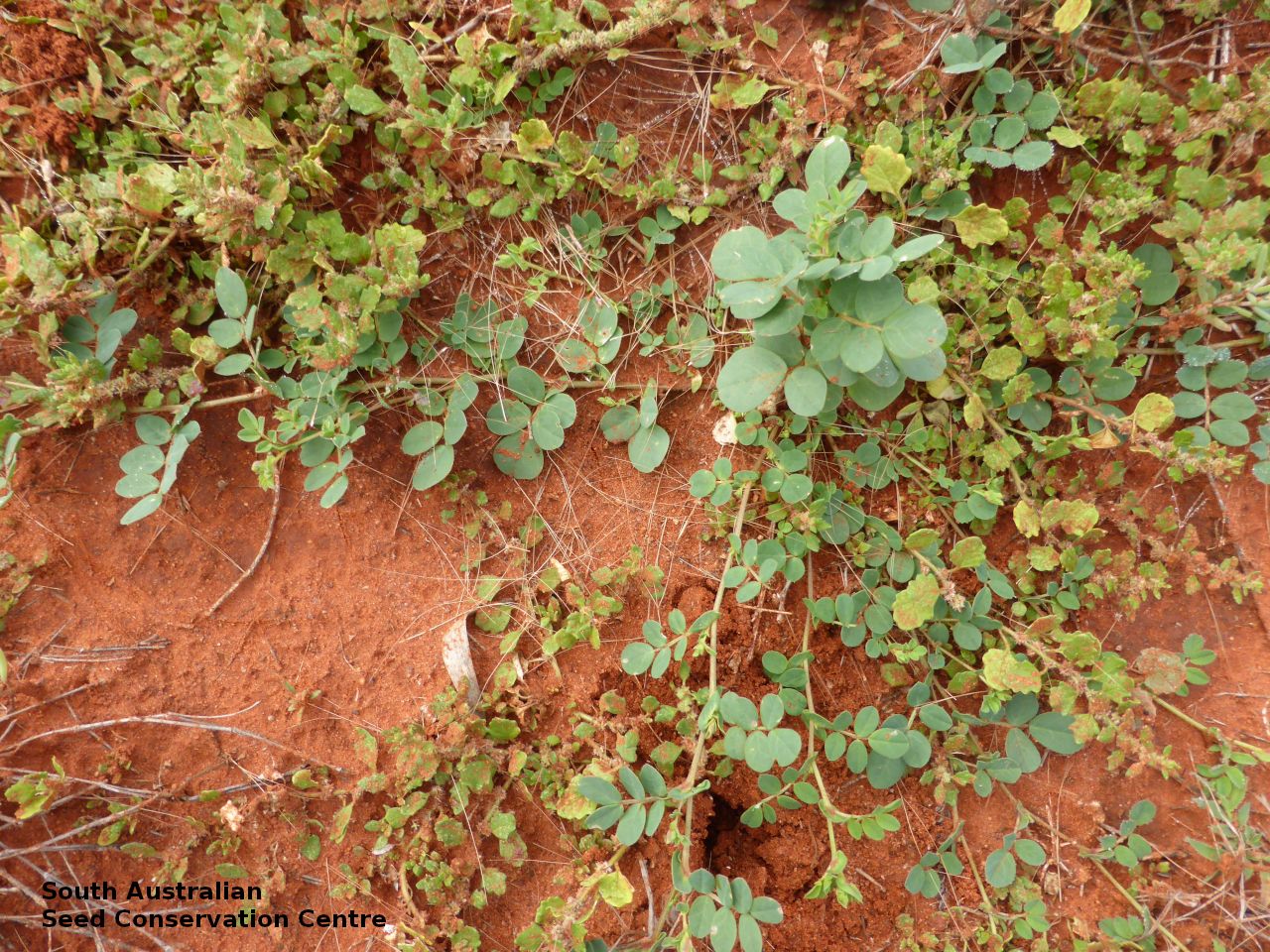
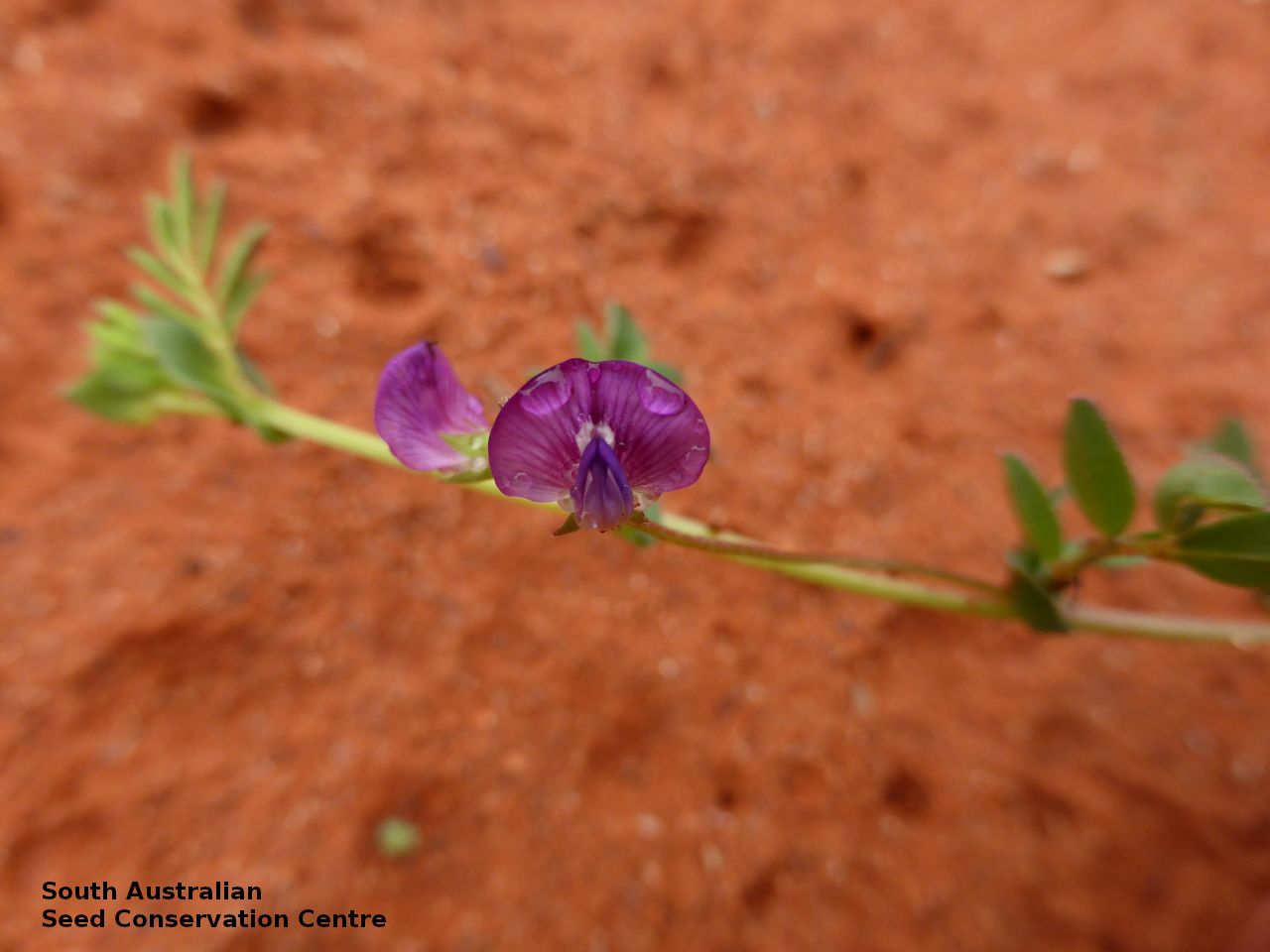
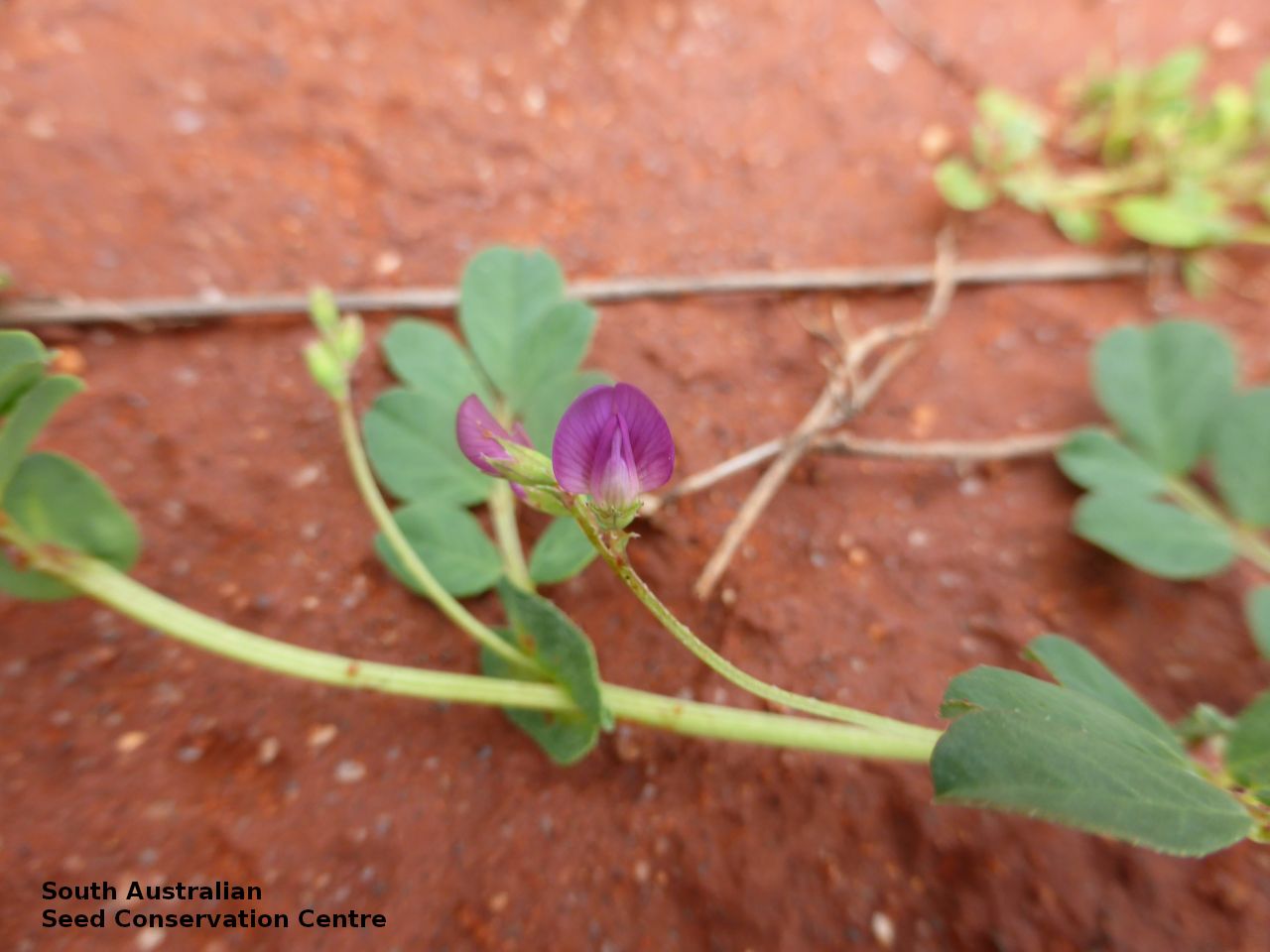
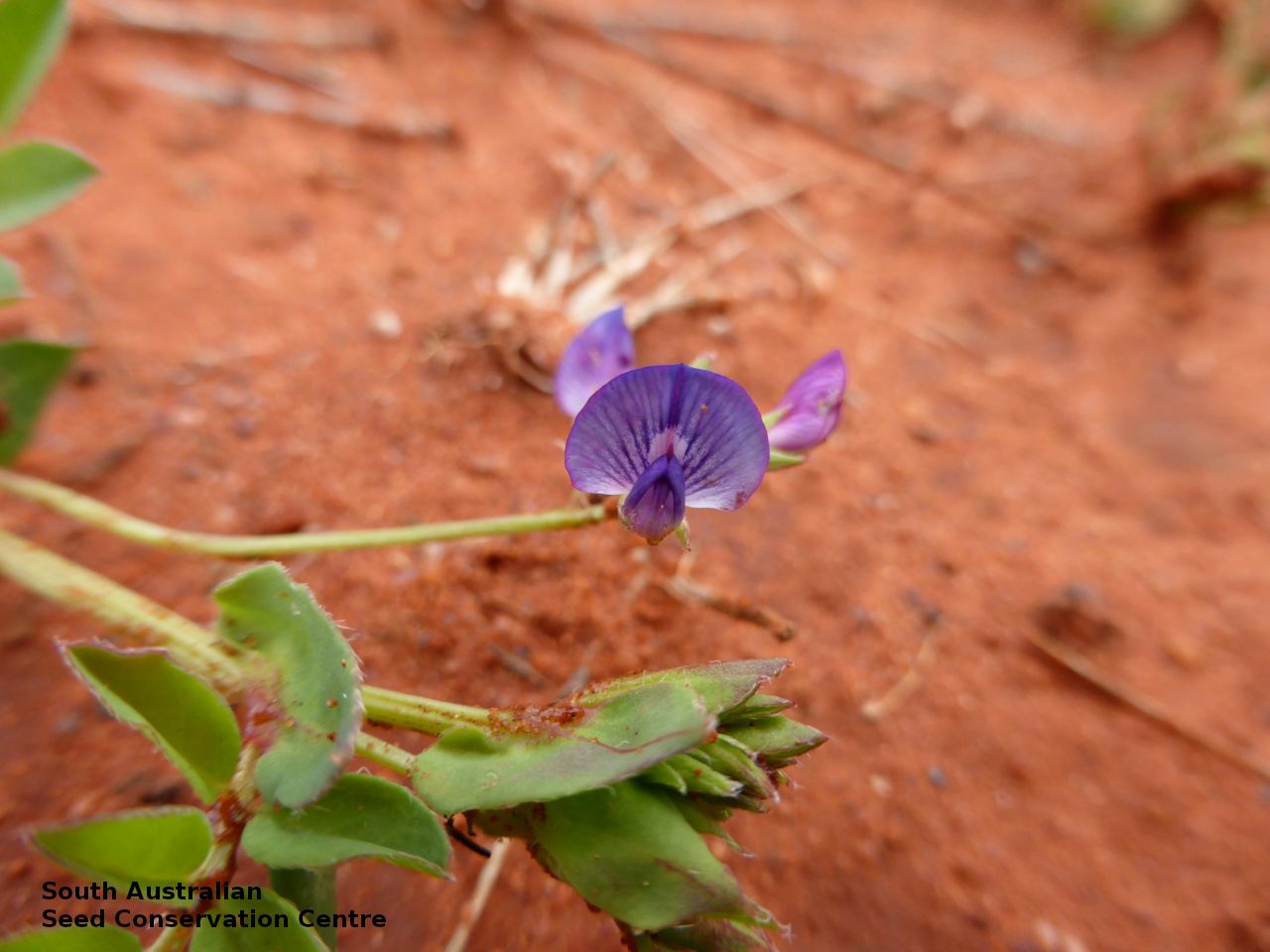
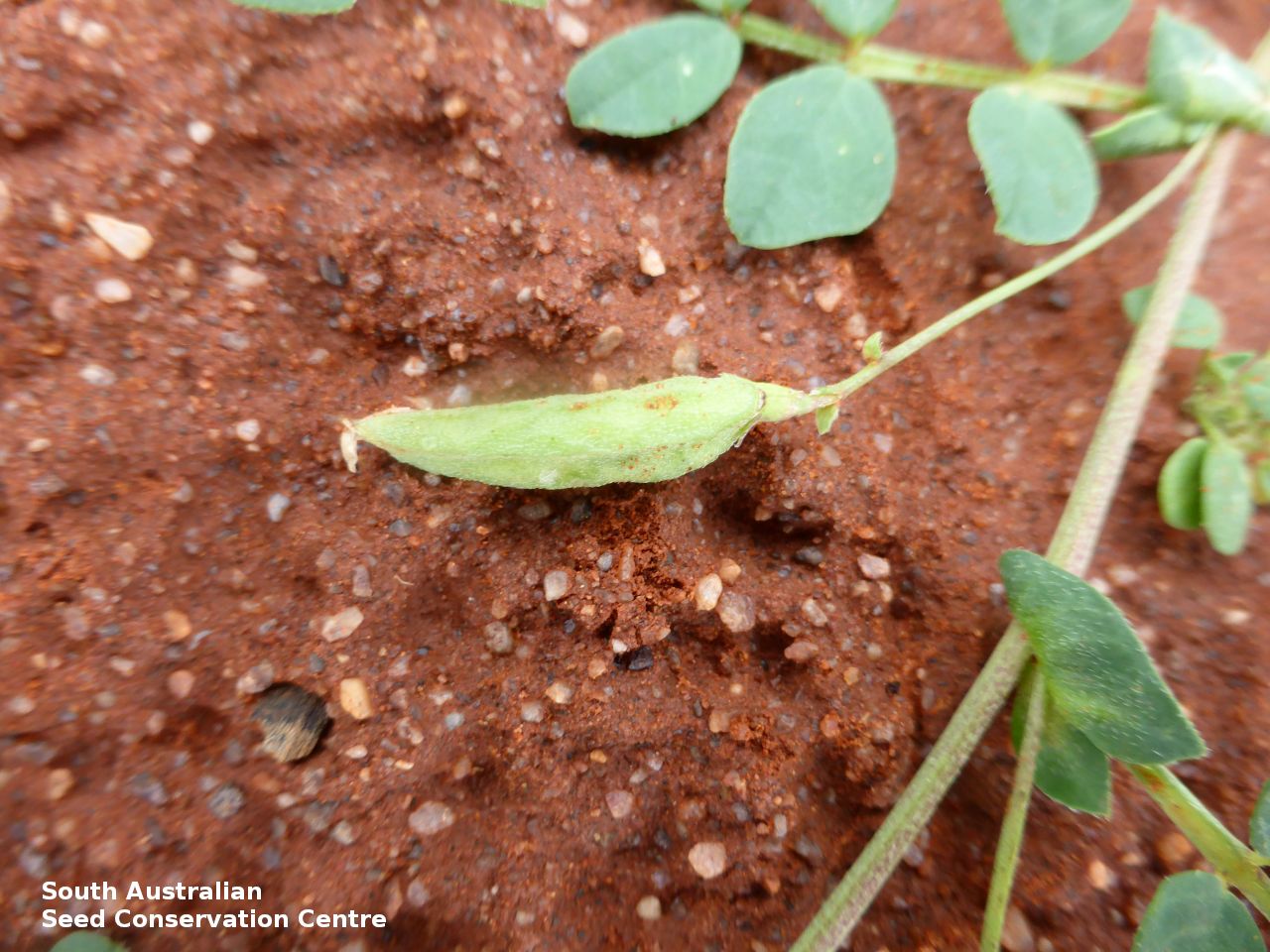
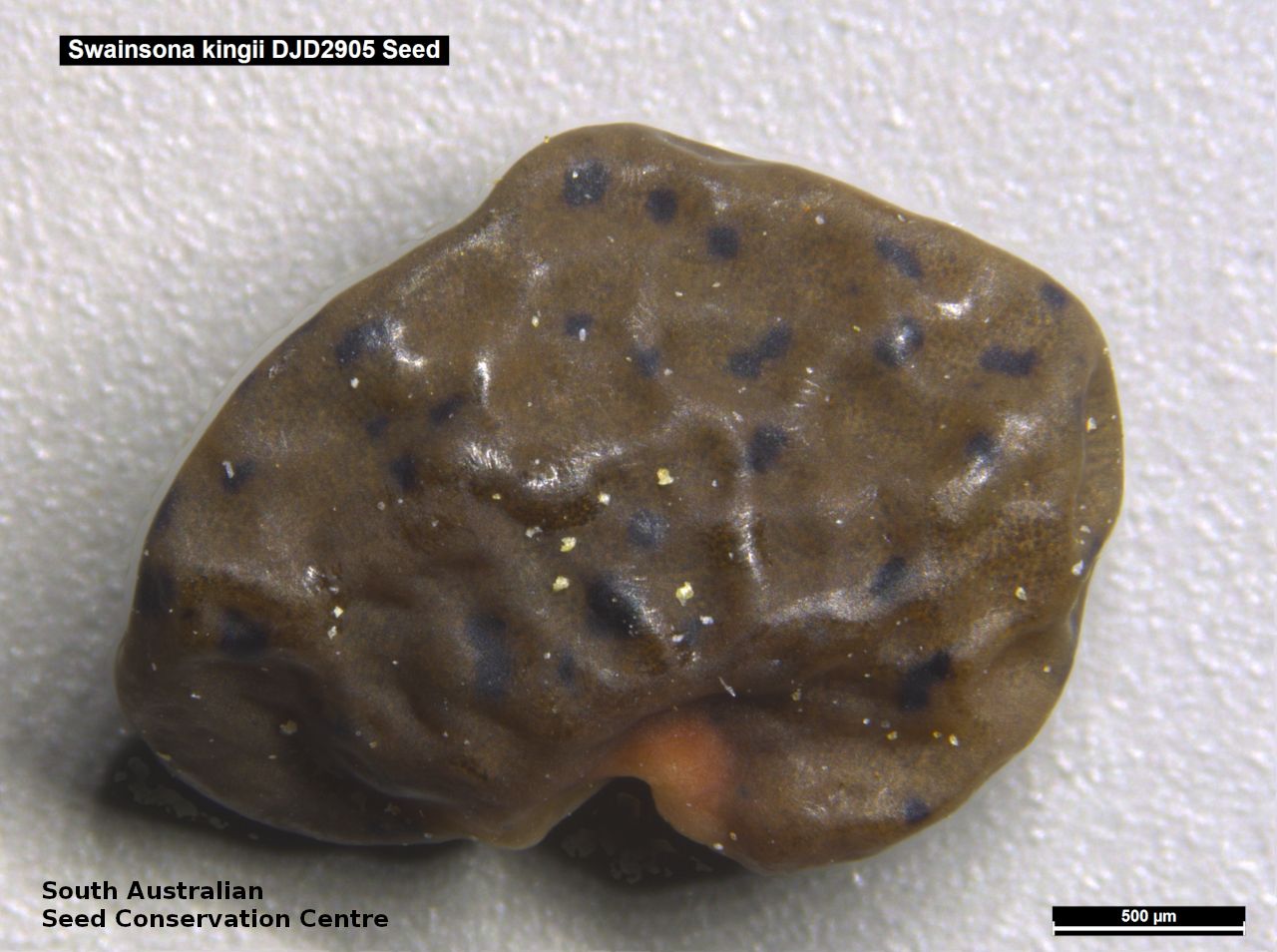
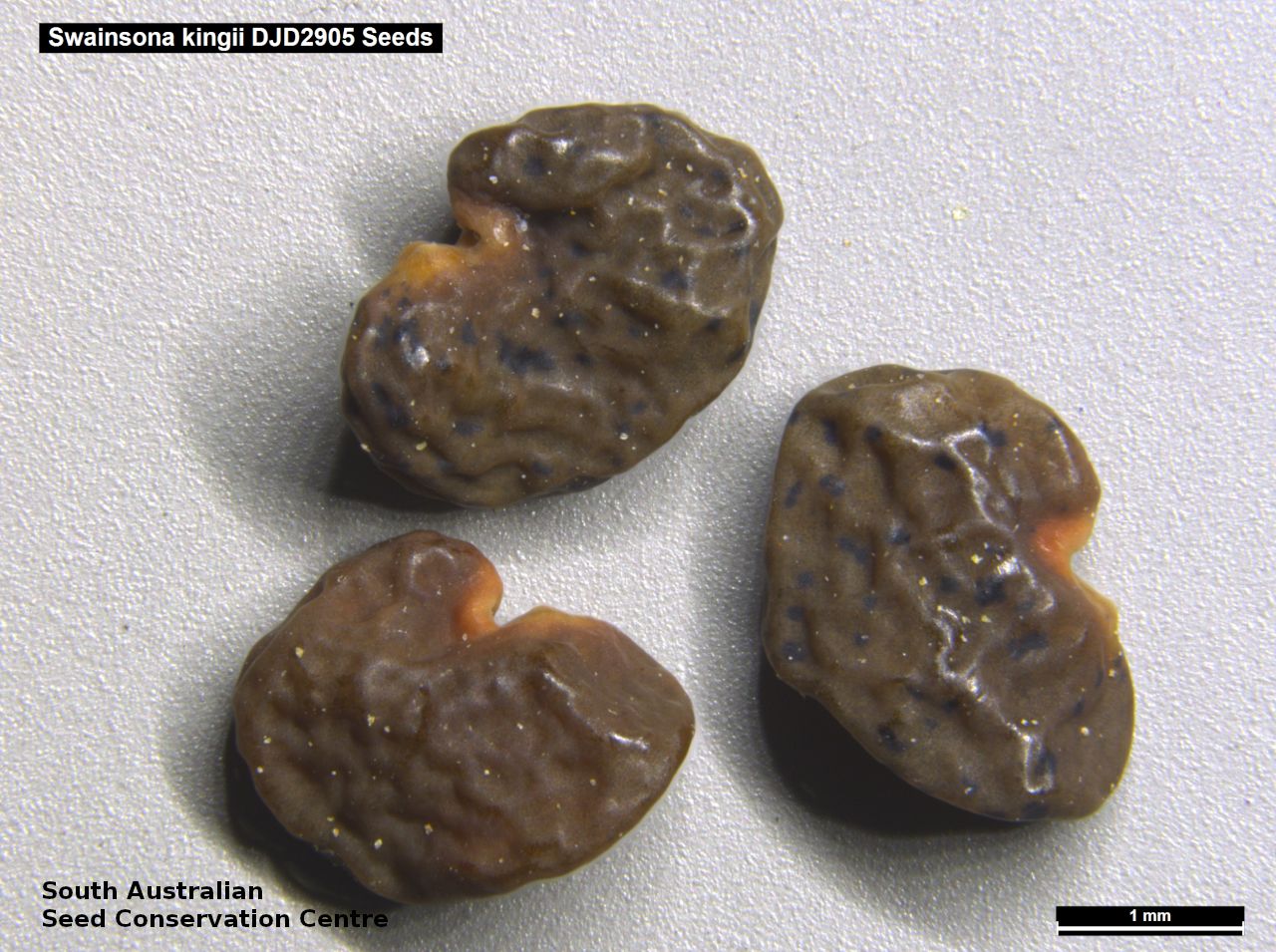

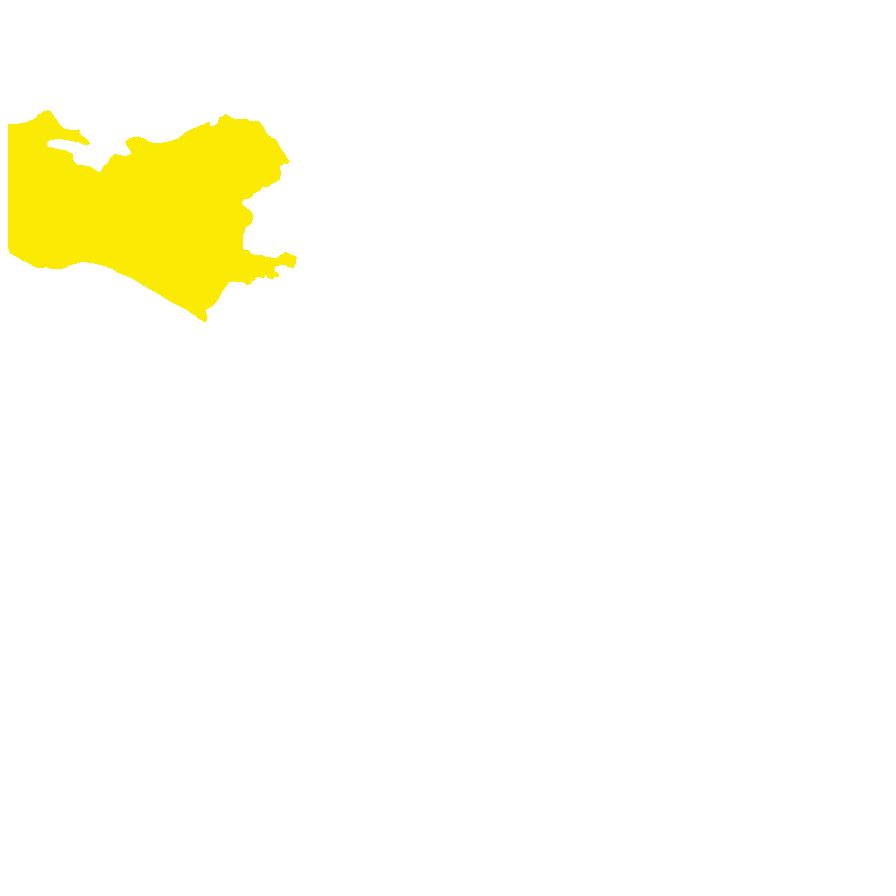
Etymology
Swainsona named after Isaac Swainson (1746-1812), an English scientist and horticulturalist who had a private botanic garden near London. Kingii named in honour of H. S King, Esq, who collected the type specimen from between Gascoyne and Fortescue River in Western Australia.
Distribution and status
Very few records and only collected from the central western border of South Australia, in clay depression, in sand or loam associated with creek-beds or lake beds or their margins. Also found in Western Australia. Native. Very rare in South Australia. Common in Western Australia.
Herbarium region: North Western
NRM region: Alinytjara Wilurara
AVH map: SA distribution map (external link)
Plant description
A prostrate or ascending annual or perennial herb reaching 15cm high with numerous stems arising from a taproot. Leaves mostly 5cm long with 3-7 leaflets which are obovate to 12mm long and 9mm wide and covered with scattered hairs on the lower surface. Flower racemes to 5cm long with 1-9 pink to purple flowers appearing from May to October. Fruits are elliptic to obovate, brown pod to 30mm long and 6mm wide. Seeds are dark brown mottle, semi-flat, reinform seed to 2.5mm long and 2mm wide. Seed embryo type is bent.
Seed collection and propagation
Collect seeds between September and November. Collect mature pods, those turning brown an contain hard seeds. Mature pods can be found lying on the ground next to the plant. Place the pods in a tray and leave to dry for a weeks. When dried the pods can become hard and difficult to open. Use a rubber bung to rub the pods or break the pods open with your fingers to dislodge the seeds. Use a sieve to separate the unwanted material. Store the seeds with a desiccant such as dried silica beads or dry rice, in an air tight container in a cool and dry place This species has physical dormancy that need to be overcome for the seed to germinate (e.g. nicking or softening the seed coat).
| Location | No. of seeds (weight grams) | Number of plants | Date collected | Collection number Collection location | Date stored | % Viability | Storage temperature |
|---|---|---|---|---|---|---|---|
| BGA MSB | 5,500 (11 g) 5,500 (11 g) | 50+ | 19-Sep-2014 | DJD2905 North Western | 1-Jan-2016 | 85% | -18°C |
| BGA | 1,900 (3.57 g) | 27-Sep-2017 | BS1137-472 North Western | 30-Jun-2018 | 100% | -18°C |
Number of plants: This is the number of plants from which the seeds were collected.
Collection location: The Herbarium of South Australia's region name.
% Viability: Percentage of filled healthy seeds determined by a cut test or x-ray.